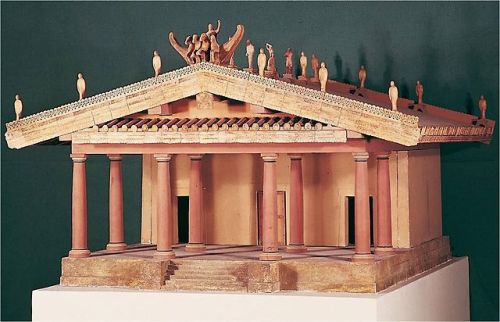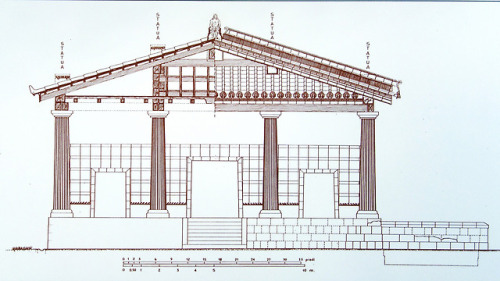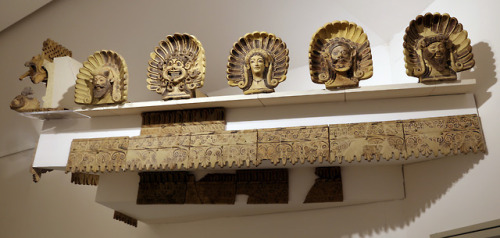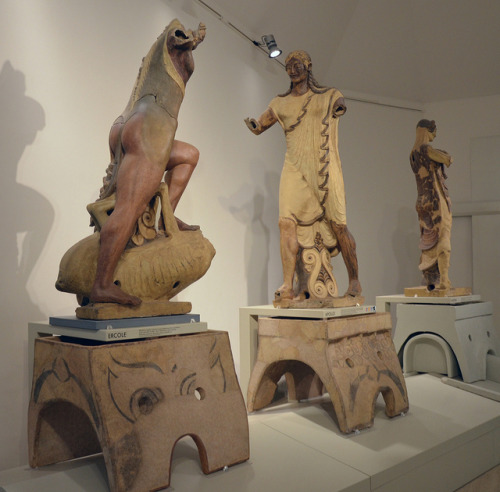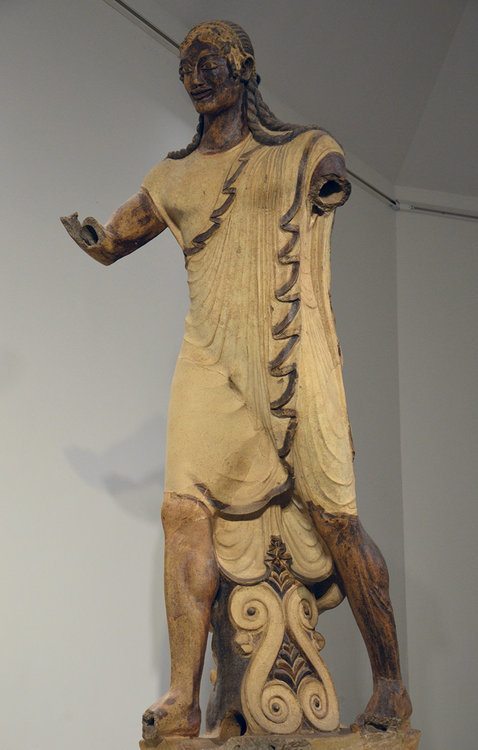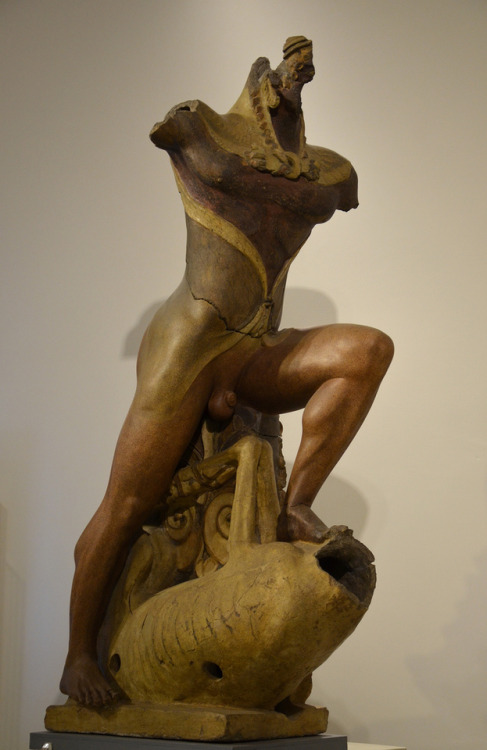classicalmonuments:Temple of Apollo Portonaccio, Veii (Veio), Italy510 BCEEtruscanThis sanctuary, am
classicalmonuments:Temple of Apollo Portonaccio, Veii (Veio), Italy510 BCEEtruscanThis sanctuary, among the most ancient and venerated on all of Etruria, was outside of the city and on a road leading to the Tyrrhenian coast and the Veii salt flats. Its most ancient nucleus was tied to the cult of the goddess Minerva and a small temple, a square altar, a portico and stairs from the road were built in about 530-530 BC in her honour. The three-cell temple with the polychrome terracotta decorations was erected in about 510 BCE in the western part of the sanctuary. Adjacent to the temple there was a great pool with a tunnel and a fence that enclosed the sacred woods. The temple was in honour of the god Apollo in his prophetic oracle aspect inspired after the Delphi model to which purification ceremonies were tied. Heracles, the hero made god dear to tyrants, and maybe also Jupiter, whose image we have to imagine on the central wall of the temple were tied to Apollo.By the middle of the 5th century BC, all work on the temple was complete and it began a slow decline while the structures sacred to Minerva were renovated on the eastern sector of the sanctuary. The starting up again of the cult worshipping Minerva, which continued also after the conquering of Veii by Rome (396 BCE) is documented by a splendid series of votive statues of classic and late-classic style boys, such as the famous head, “Malavolta” as to indicate the important role of the goddess in the rituals of the passage from adolescence to adulthood that signalled the fundamental phases of the life of the members of the aristocratic families of Veii. In the 2nd century BCE, the tuff mine that destroyed the central area of the sanctuary was opened causing damage to the temple and the sliding down of material downhill. -- source link
Tumblr Blog : classicalmonuments.tumblr.com
